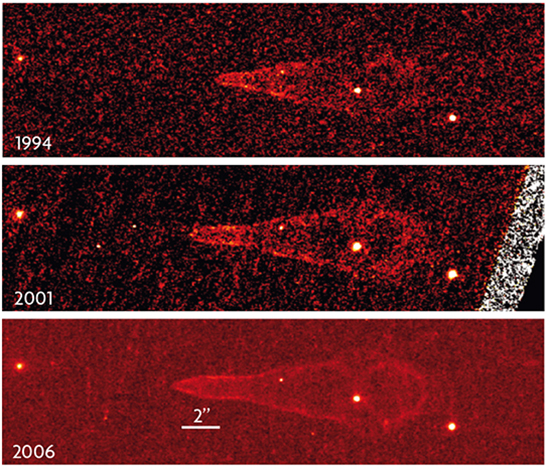
|
Imagine a solar panel that can transform almost one hundred percent of the sunlight it receives into electricity. To make the most out of nights, place it in space. It would receive light continuously. Now imagine another one next to it. And another one… Until you have a full sphere covering the Sun completely. You just built a Dyson sphere, a way for a super-advanced civilization to harness all the energy of a star. Not a shred of light would be wasted. But there is no escape from thermodynamics: part of the energy would radiate into space as heat, as infra-red light. Such an emission could be detected via astronomical methods. In 2009, Richard Carrigan, from Fermilab, studied the extensive infra-red image catalogue of the IRAS space telescope (which covers 96% of the sky) and identified sixteen candidates that could become Dyson spheres. But, most likely, those stars are surrounded by a thick dust cloud: the observational difference is subtle, so more measurements would be necessary in the future. A cumulative approach can be more successful: let’s look into other galaxies. A Dyson-sphere-capable civilization would be expected to colonise much of their galaxy, leaving large areas with no apparent stars, called Fermi bubbles. A spiral galaxy has much natural structure and gaps that may be confused with Fermi bubbles. It is best to look for them in elliptical galaxies, but no such search has been carried out yet. A completely colonised galaxy’s brightness would be attenuated, but it would emit more infra-red light. Roger Griffith’s team, from the Pennsylvania State University, looked for that this year, using the database of the infra-red space telescope WISE. The results were negative: after examining some 100,000 galaxies, none showed anything relevant enough. But they did find fifty galaxies with an unusually high infra-red emission. |
«A Dyson-sphere-capable civilization would be expected to colonise much of their galaxy, leaving large areas with no apparent stars, called Fermi bubbles»
|
|
|
|
||
|
Are there no super-civilizations in those galaxies? Or do they not lose as much heat as we think? Well, there is a Dyson sphere variant that would be more difficult to detect. If placed around a white dwarf, the sphere can be small. There are many white dwarfs. If the sphere is solid, the white dwarf’s gravitational pull would allow people to walk on the outside, expanding the living space of the civilization. They would have less energy loss, and they would cover the already weak white dwarfs, so they could easily pass unnoticed. And what about detecting spaceships? A spaceship travelling almost at the speed of light needs protection against the interstellar material that crosses its path. Strong magnetic fields may be enough, but their interaction with the interstellar medium would produce a bow shock similar to a ship’s wake on the water. If we see a compact object with a bow shock, it can be a pulsar, a dead star created after the explosion of a supernova, with intense magnetic fields, which is sometimes thrown at a high speed by the explosion. But it could also be a spaceship. How can we tell them apart? It is difficult, but if we can hear regular radio pulses, it is a pulsar. It would be easier if the ship was travelling towards us, because we would see the light and heat from the engine’s exhaust. This reminds me of the SCP 06F6 object, seen by the Hubble space telescope in 2006 in the Boötes constellation. This mysterious source appeared, increased in brightness during one hundred days until it reached a peak, then decreased for another one hundred until it vanished, in a mysteriously symmetrical fashion. Just as we would expect from a braking ship coming to the Solar System. But there is nothing to worry about, right? Fernando Ballesteros. Researcher at the Astronomical Observatory of the University of Valencia. |
|

 Pictures from the Hubble Space Telescope, A. K. Gautam
Pictures from the Hubble Space Telescope, A. K. Gautam



